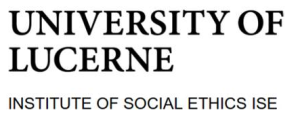In his research on Yemen, Tariq investigates how digital tools can promote higher degrees of participation and inclusion, disperse power, and enable greater agency in interactions between international and local actors.
Michele Giovanardi: Welcome to this interview with Tariq, who recently won the School of Transitional Governance’s Best Master’s Thesis Award. His thesis, titled “Bridging the Distance: Exploring Power and Agency within the Hybrid Cases of Digital Peacebuilding in Yemen” received accolades from across the faculty. Today, we will delve into Tariq’s work, discussing his motivations, research methodology, key findings and policy recommendations. Tariq, could you introduce yourself and tell us why you chose this topic? Can you also explain the concept of hybrid and digital peacebuilding and its relevance to Yemen?
“I am Tariq, a Canadian with Sri Lankan roots. I moved from a career in social work within the Canadian prison system to focus on politics and research in the international arena. For the past two years, I have been drawn to peace and conflict studies, particularly the interactions between international and local actors in different contexts. I became interested in digital spaces as a means to bridge these interactions. During an internship at the European Institute for Peace, I had the opportunity to work on the Yemeni conflict and witnessed how digital tools were being used for both war and peacebuilding purposes. Yemen has a young population with limited physical connectivity due to the conflict and difficult geography. I was fascinated by the potential of digital platforms to overcome these barriers and facilitate peacebuilding efforts. Hybrid peacebuilding, a relatively new interdisciplinary concept, aims to combine traditional top-down approaches with grassroots and localised conceptions of conflict transformation. In my research, I explored how digital spaces can connect these two approaches and enhance power dynamics and agency in peacebuilding”
MG: Before delving deeper into your work, could you provide some background on the conflict in Yemen and its current state?
“It took the full length of my internship to fully understand even 1% of the complexities of the conflict. The conflict emerged in the aftermath of the Arab Spring protests of 2012, when young people expressed their dissatisfaction with social conditions. The then leader managed to hold on to power, resulting in a civil war that has lasted eight years. The conflict involves various actors, including religious, political, tribal, and sectarian groups. One of the prominent movements is Ansar Allah or the Houthi movement, which tries to control the entire country. There is also a secessionist movement based in Aden, in the south, which aims to separate from the Republic of Yemen. These groups, together with local militias and external actors, such as Al Qaeda, contribute to a complex web of conflict. The conflict is both physical and digital, with battles being fought on multiple fronts, including online platforms.”
MG: You mentioned the concepts of hybrid peacebuilding and digital peacebuilding. Can you elaborate more on the conceptual framework and methodology employed in analysing the conflict in Yemen?
“My methodology consisted of two tracks: document analysis and elite interviews. I obtained documents from the organisations involved in the five case studies I used for my research and conducted ten interviews with employees working on these projects, both Yemeni and non-Yemeni. I then employed the “Claims-Agenda-Effects” framework aimed to take a critical approach to understanding international efforts in the Yemeni context. The claims aspect investigated how organisations perceive the context in which they operate, while the agenda-setting aspect explored the extent to which international actors involve local voices in defining project objectives. The effects aspect aimed to understand the political outcomes of these projects, focusing on whether they facilitated deliberation and created safe spaces for discussions that would otherwise have been difficult in Yemeni society.”
MG: Let’s delve into the five case studies you examined. Can you provide an overview of these cases and highlight their relevance to your overall argument?
“Certainly. The first case is ‘Manasati30’, a social media dialogue platform founded in the aftermath of the Arab Spring. It offers young Yemenis a forum to express themselves freely on various issues. The platform, incubated by RNW Media, uses polls to generate discussion topics, which are then studied by monitoring and evaluation specialists. The results are transformed into multimedia content and digital campaigns that encourage conversations on sensitive topics within Yemeni society. This case demonstrates a successful partnership between an international NGO and a local organisation. The second case is ‘Arabia Felix’, an initiative of GIZ, the German Development Agency, which develops digital content to support peaceful coexistence and non-violent conflict transformation in Yemen. These are mobile games designed in cooperation with Yemeni game developers and journalists. These interactive games are adapted to the Yemeni context and have generated significant engagement and discussion on social media platforms. The third case is that of ‘Saferworld’, a UK-based NGO that conducted a peacebuilding course on WhatsApp. The aim was to build peacebuilding skills among Yemeni youth through low-tech platforms accessible even in remote areas. The course, facilitated by local moderators, provided relevant skills in the Yemeni context. The fourth and fifth cases are related to the Office of the Special Envoy for Yemen, a political office mandated by the UN Security Council. The office collaborated with Build Up, an international NGO, to conduct focus group consultations on WhatsApp. The consultations involved 93 Yemeni women, seeking their perspectives on the peace process and the impact of the conflict. The information gathered was shared with the Special Envoy’s office to support his mediation efforts. Build Up applied a feminist approach to ensure the recognition of power dynamics in consultations with Yemeni women. The last case involved the United Nations Innovation Cell, a body of the UN Department of Political and Peace Affairs. They launched a large-scale digital dialogue powered by artificial intelligence in Yemen, enabling simultaneous conversations with up to 1,000 participants. Questions were asked in local dialects and the aim was to gather perceptions and insights on the peace process and the impact of COVID-19.”
MG: What do you think are the main results of your analysis of these five cases in the context of the conflict in Yemen?
“Through my research, I observed a renegotiation of power symmetries in digital spaces in the five cases examined. This led to a decentralization of power and decision-making by international organizations and NGOs. In addition, I found evidence of participatory methods, co-creation and creation of safe spaces that fostered deliberation within societies, moving away from ideas imposed exclusively by international organizations. These findings highlight the importance of renegotiating power symmetry, introducing agency through capacity and skill development, and creating safe spaces. In addition, I noted a distinction between international-local and international-international partnerships. The former, with stronger ties to Yemeni civil society organizations, proved more meaningful and effective than those more distant from the Yemeni context. These findings underscore the need to align and engage local partners as much as possible. In addition, I found that internationally established priorities, such as the Women, Peace and Security agenda or the Sustainable Development Goals, do not always align perfectly with Yemeni cultural nuances. For this reason, international partners should adopt a “do-no-harm” approach to ensure that their interventions respect local needs and avoid imposing external priorities.”
MG: In light of these results, what are the main recommendations you would give to actors working in this space?
“The first recommendation is that international actors develop a strategic plan that prioritizes capacity building, ownership, and involvement of local partners. It is critical to ensure that projects are designed to incorporate the perspectives and goals of local communities. Compensation should be provided for local partners to avoid relying solely on their voluntary contributions, especially when considering the long-term impact of a civil war. Another important recommendation is to facilitate open lines of communication between all partners, recognizing different cultural backgrounds and communication norms. Establishing a code of conduct and group agreements at the beginning of the project can promote effective and free dialogue. Finally, it is critical to foster a sense of community continuity. By creating spaces where project participants can continue to use resources after international involvement ends, the potential for long-term impact is maximized. International actors, particularly organizations, should prioritize community incubation whenever possible in order to achieve higher impact programs.”
MG: At the Global PeaceTech Hub we seek to build connections between peacebuilding organizations, technology companies and governments to enhance the use and governance of technology for peace. Do you think this kind of partnership holds potential, even beyond the Yemen case, or do you foresee major obstacles in this direction?
“When we look at the bigger picture, there is undoubtedly a lot of potential in these partnerships. Platforms like ‘Manasati30′ demonstrate that social media, which has often been used in polarizing ways, can have a positive impact when custom-designed processes tailored to local contexts are implemented. These platforms can foster constructive conversations that may not be possible due to restrictions on civic space, particularly for young people who are active on these technologies. While some platforms have made efforts to improve their environment, such as Twitter’s toxicity issues and Facebook’s introduction of threads for kinder conversations, it remains to be seen how effective these measures are. However, partnering with organizations like RNW Media could lead to the scaling up of social cohesion strategies for designing social media dialogues, especially if companies like Facebook come on board.”
MG: As we wrap up, I’d like to ask you about your own aspirations. Having recently graduated with a STG Master’s in Transnational Governance, receiving recognition for your outstanding thesis, where do you envision your career heading from here?
“I feel fortunate to have had the opportunities presented to me during my time at the university, including my internship at the European Institute of Peace, which directly led to this thesis project. It allowed me to deeply explore the intersection of peace and conflict studies within a policy space. Ideally, I see my career developing within the nexus of humanitarian needs, development, and peacebuilding. While I don’t want to limit myself to a specific organization or sector, my thesis has given me insights into the potential benefits and harms of digital technologies, which I believe will serve me well as I pursue roles in policy and advocacy settings.”
MG: That sounds fantastic. We wish you all the best in your future endeavors, and thank you for this insightful conversation.







